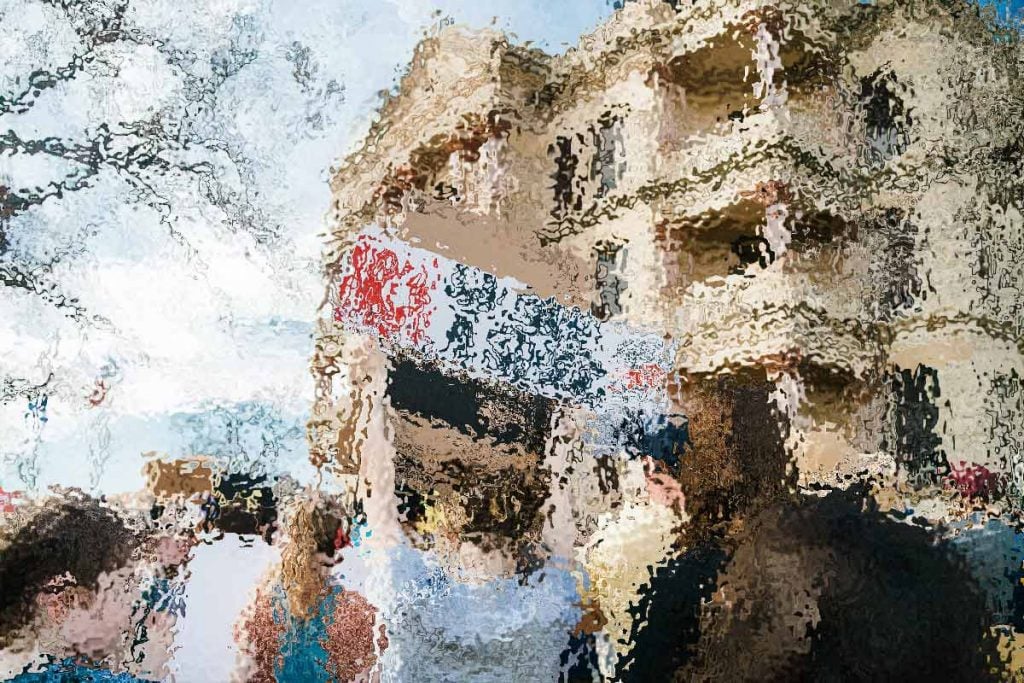Good web design has visual weight, is optimized for various devices, and has content that is prioritized for the medium. The most important elements of a web page should have more visual weight to “naturally attract” a visitor’s attention.
Good design is making something intelligible and memorable. Great design is making something memorable and meaningful.
Dieter Rams
Most users search for something interesting (or useful) and clickable; as soon as some promising candidates are found, users click. If the new page doesn’t meet users’ expectations is continued.
A good website should be easy to navigate
Not all websites are made equal. Some websites are simple, logical, and easy to use. Others are a messy hodgepodge of pages and links.

Without website navigation, your visitors can’t figure out how to find your blog, your email signup page, your product listings, pricing, contact information, or help docs.
[rb_related title=”Also in This Issue” total=”2″]
Quick and easy access to the content they’re after is more important for your website users than a… visually-stunning design.
Website navigation allows visitors to flow from one page to another without frustration. If you’ve done your job well, visitors leave your site with the intention to return and might even buy something from you or sign up for your email list.
Bad navigation is an especially common problem. We’ve all struggled to find things on disorganized websites without any logical structure. It feels hopeless.
Creating visual rhythms in your layouts
In design, rhythm is created by simply repeating elements in predictable patterns. This repetition is a natural thing that occurs everywhere in our world. As people, we are driven everyday by predictable, timed events.

One of the best ways to use repetition and rhythm in web design is in the site’s navigation menu. A consistent, easy-to-follow pattern—in color, layout, etc. Gives users an intuitive roadmap to everything you want to share on your site.
Elements that can help website visual composition
Nobody enjoys looking at an ugly web page. Garish colors, cluttered images and distracting animation can all turn customers “off” and send them shopping “somewhere else”. Basic composition rules to create more effective:
- Direct the Eye With Leading Lines
- Balance Out Your Elements
- Use Elements That Complement Each Other
- Be clear about your “focal points” and where you place them
Diving into UX and UI design
UX and UI: Two terms that are often used interchangeably, but actually mean very different things. So what exactly is the difference?
Styles come and go. Good design is a language, not a style.
Massimo Vignelli
UX design refers to the term “user experience design”, while UI stands for “user interface design”. Both elements. But despite their relationship, the roles themselves are quite different.
Ensure that interactive elements are easy to identify
Good design guides the user by communicating purpose and priority. For that reason, every part of the design should be based on an “informed decision” rather the current trend.

Provide distinct styles for interactive elements, such as links and buttons, to make them easy to identify. For example, “change the appearance of links” on mouse hover.
Breaking down the barriers
Design is not the end-all solution to all of the worlds problems — but with the right thinking and application, it can definitely be a good beginning to start tackling them.
Hello, the whole thing is going well here and ofcourse every one is sharing
data, that’s actually fine, keep up writing.
Thanks for another great post. Where else could anyone get that kind of information in such a perfect way of writing? I have a presentation next week, and I am on the look for such info.
Its like you read my mind! You seem to know so much about
this, like you wrote the book in it or something. I think
that you could do with a few pics to drive the message home a little
bit, but other than that, this is wonderful blog.
A great read. I will certainly be back.
Howdy! Do you know if they make any plugins to help with Search Engine
Optimization? I’m trying to get my site to rank
for some targeted keywords but I’m not seeing very good gains.
If you know of any please share. Cheers! I saw similar blog here:
Eco bij
I know this if off topic but I’m looking into starting my own blog and was curious
what all is needed to get set up? I’m assuming having a blog like yours
would cost a pretty penny? I’m not very internet smart
so I’m not 100% sure. Any recommendations or advice would be greatly appreciated.
Cheers
It’s a pity you don’t have a donate button! I’d certainly donate to this brilliant blog! I guess for now i’ll settle for bookmarking and adding your RSS feed to my Google account. I look forward to brand new updates and will share this blog with my Facebook group. Talk soon!
me encantei com este site. Pra saber mais detalhes acesse o site e descubra mais. Todas as informações contidas são conteúdos relevantes e exclusivos. Tudo que você precisa saber está está lá.
Wheen I originally commenged I clicked the “Notify me when new comments are added” checdkbox and now each time a comment is added
I geet several e-mails with thhe same comment. Is theere any wway
yoou ccan remove peoplee from thatt service? Thank you!
Outtstanding quest there. What happened
after? Thanks!
Whats up very cool blog!! Man .. Beautiful ..
Wonderful .. I’ll bookmark your web site and take the feeds additionally?
I am happy to search out so many useful information right here within the
put up, we need develop extra techniques
on this regard, thank you for sharing. . . . . .
This design is wicked! You definitely know how to keep a reader entertained. Between your wit and your videos, I was almost moved to start my own blog (well, almost…HaHa!) Fantastic job. I really loved what you had to say, and more than that, how you presented it. Too cool!
Hello there! Do you know if they make any plugins to help with Search Engine Optimization?
I’m trying to get my blog to rank for some targeted keywords but I’m not seeing very good success.
If you know of any please share. Thank you! You can read
similar art here: Code of destiny
I’m extremely inspired together with your writing talents and also with the layout for your blog. Is this a paid topic or did you modify it yourself? Either way stay up the nice high quality writing, it is uncommon to see a great weblog like this one today. I like thehappycampers.com !
I’m really inspired together with your writing abilities as well as with the layout for your weblog. Is that this a paid subject or did you modify it your self? Either way stay up the nice high quality writing, it is rare to see a great weblog like this one nowadays. I like thehappycampers.com ! Mine is: Stan Store
I’m really inspired together with your writing skills and also with the format in your weblog. Is that this a paid topic or did you customize it yourself? Either way stay up the excellent quality writing, it is rare to look a great blog like this one today. I like thehappycampers.com ! Mine is: HeyGen
Wonderful article! Thiss iss the typoe of informaton thast aare meznt too bbe shwred across thhe
net. Disggrace oon thee search enginess for nno longer positioning
thnis publish higher! Comee oon oveer andd seek advice frdom myy sie .
Thanks =)
I know this web page provides quality based articles or reviews and
extra material, is there any other web site which gives these information in quality?
XNXX – Nonton Video Bokep HD Terbaru MSBREEW Anti Blok Link Viral!
Salah suatu magnet utama sejak XNXX kali ini sama dengan konten MSBREEW, yang
lagi tersohor amat lantaran kualitas produksinya yang
profesional selanjutnya aktrisnya yang memikat.
Cara Membuka Bokep Anak Kecil mewujudkan melenceng eka makalah yang kayaknya
memang lagi banyak dicari-kerekau deh. Bagi Kakek, kanak-kanak sama tua itu adalah ketika kemasygulan dalam hidup.
Artis film dewasa “Shigeo Tokuda”, alias nan dikenal plus
Kakek Sugiono dilahirkan tepat pada candra 18
Agustus 1934. Itu artinya, 11 tarikh sebelum Indonesia leluasa.
Fakta Pembuka : Kakek Sugiono, tidak ada hubungannya oleh Christian Sugiono.
Lebih dari itu, sealim-alimnya seseorang,
tidak kira-kira dia tidak mengenal Maria Ozawa. Bokepjepang Mungkin Adalah Situs Terbaik Yang Tersedia Secara Online Yang Menawarkan Anda Layanan Mengunduh Video Jav Secara Gratis.
Aplikasinya ada dalam Windows, Mac, Android, pula Linux – pengguna iOS dapat membonceng
Browser Onion. Layanan VPN laksana ExpressVPN dapat diandalkan buat membuka menghalangi konten dewasa dengan menyandang kecerdasan memadai demi penjelajahan dan streaming bebas lag.
ExpressVPN ialah VPN terbaik bagi mengakses konten porno
pakai aman, yang menyandarkan istiadat Lightway serta kecekatan interelasi penting selama streaming bebas lag.
Terhubung ke server. Pilih peladen yang membebaskan jalan masuk ke konten porno akan pergi blokir tempat dewasa.
Selain kemudahan lagi kecekapan, pola endapan per QRIS nan disediakan bagi Bersih4d juga menjamin kedamaian pembicaraan. Tak semata-mata itu, BERSIH4D serta dikenal akibat praktik keamanannya yang ruwet, mengagih kredo
akan karet pemain bahwa setiap perundingan serta informasi pribadi mereka pada dijaga demi teliti.
Admin Bersih4d SLot telah merangkum 10 rekomendasi slot
nan pastinya mau memadai dahaga Anda tentu kesuksesan! Tidak doang itu, layanan pelanggan BERSIH4D nan responsif pula supel selesai membantu setiap pelaku beserta
segenap keinginan dengan pertanyaan nan mereka miliki, menetapkan kemahiran bermain yang mulus dengan memuaskan bagi semua pengikut.
Promo ini berlaku kepada semua member dekat BERSIH4D.
Promo ini doang berlaku perlu bon BANK lalu E-wallet doang.
Nikmati komisi terbesar lagi pembicaraan nan paling
cepat namun dalam Bersih4D. Dengan serupa itu, tidak
mengherankan kalau BERSIH4D tetap menjadi destinasi utama bagi karet peminat gambling Online dalam
Indonesia, sebab kewajiban mereka demi menganjurkan pengetahuan berjudi online
yang terbaik beserta terbesar. Bersih4d telah berjalan lebih lanjut dalam menggampangkan profesionalisme
berjudi Online serta meluangkan waktu desain deposit lewat
QRIS, sebuah pintasan modern yang mengganti macam
negosiasi dilakukan.
Hampir semua cowok pernah menonton, menonton, membaca, atau menikmati benda porno ataupun bokep.
Namun, mengakui bahwa sampeyan cowok yang nonton bokep jauh lebih membantu ketimbang memperkatakan dirimu seorang penggemar.
Dengan kredibilitas iktikad nan Kakek miliki,
si eyang biar mengijinkan kaul baik Kakek tersebut. Dengan ini doang
tidak mengisahkan baik ataupun buruknja; semata-mata hanja menceritakan jang kelihatan pada
kita didunia saat ini ini. Tak dapat disangkal, bahwa dalam kurun modern,
jadi konsekuensi bertemunja matjam2 kebudajaan selanjutnya kemadjuan matjam2 kepandaian, baik didaerah-bagian jang beragama
Keristen maupun jang beragama Islam, tertentang ada suatu
tendens, suatu ketjenderungan bagi melewatkan aturan2 jang ganyut tentang persaudaraan seks
jang ditimbulkan bagi suasana kebudajaan Semitis itu.
Cara termudah untuk menjuling apakah aku benar sama dengan atas mengklik ke luput unik situs
galeri ini. Apakah sketsa telanjang gadis-gadis seksi ini bersama cermin nan sempurna diedit
pada Photoshop? Mungkin bintang film ini yaitu penerus lantaran Kakek Sugiono nan kepada terus bergerak di dunia komidi gambar panas hingga yaum senjanya, berkat telah
banyak gerangan komidi gambar nan ia perankan. Namun, untuk gara-gara informasi nan beta
dapatkan rendah jelas, perihal hamba paparkan duet jalan prinsip nonton bioskop porno
nan ada, sebatas menatap maupun melihat saja mengunduh/download konten pornonya.
Atau sepertinya kalian merupakan meleset wahid jiwa-anak Adam gemuk nan suka nonton konten BBW
hamil tentakel?
Получить психологическую помощь Консультация может проходить в удобном для вас формате
120
Nice
Nice
thcv gummies area 52
weed pen area 52
thca products area 52
distillate carts area 52
sativa gummies area 52
best cbd sleep edibles area 52
thc gummies
where to buy shrooms area 52
indica gummies area 52
hybrid carts area 52
full spectrum cbd gummies area 52
liquid thc area 52
infused pre rolls area 52
liquid diamonds area 52
thca companies area 52
live resin gummies area 52
hybrid gummies area 52
sativa vape area 52
indica vape area 52
thca gummies area 52
microdosing edibles area 52
thc gummies for anxiety area 52
thc oil area 52
thca diamonds area 52
thc gummies for pain area 52
snow caps thca area 52
thca disposable area 52
thc tinctures area 52
best amanita edibles area 52
buy pre rolls online area 52
live rosin gummies area 52
sleep gummies area 52
live resin carts area 52
mood gummies area 52
weed vape area 52
1 gram carts area 52